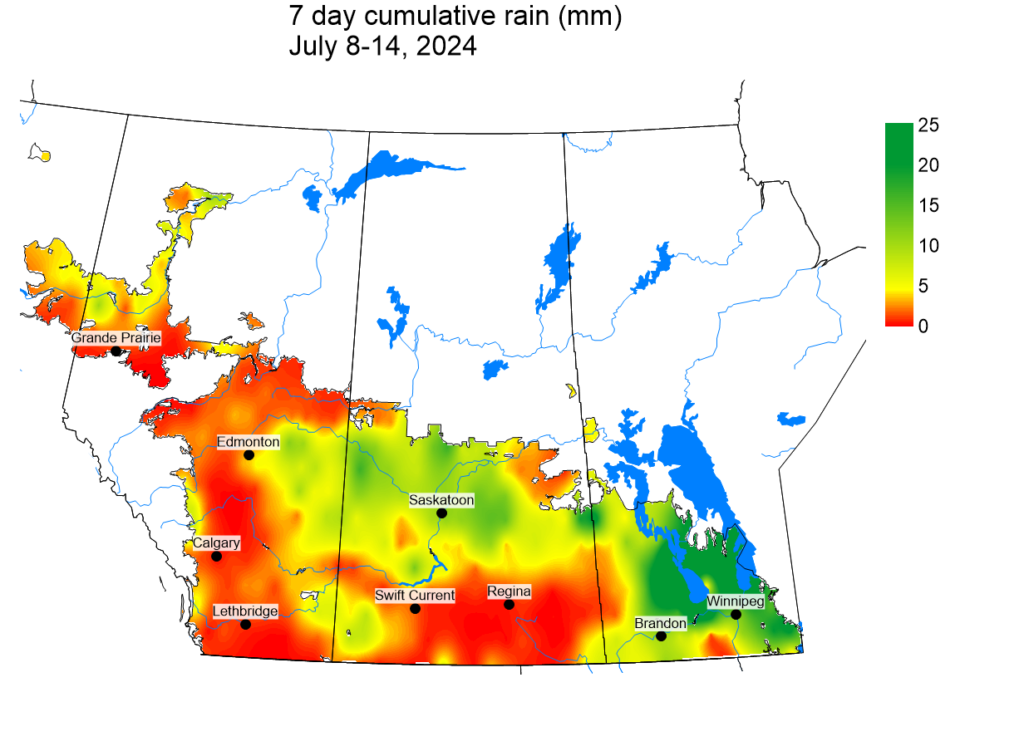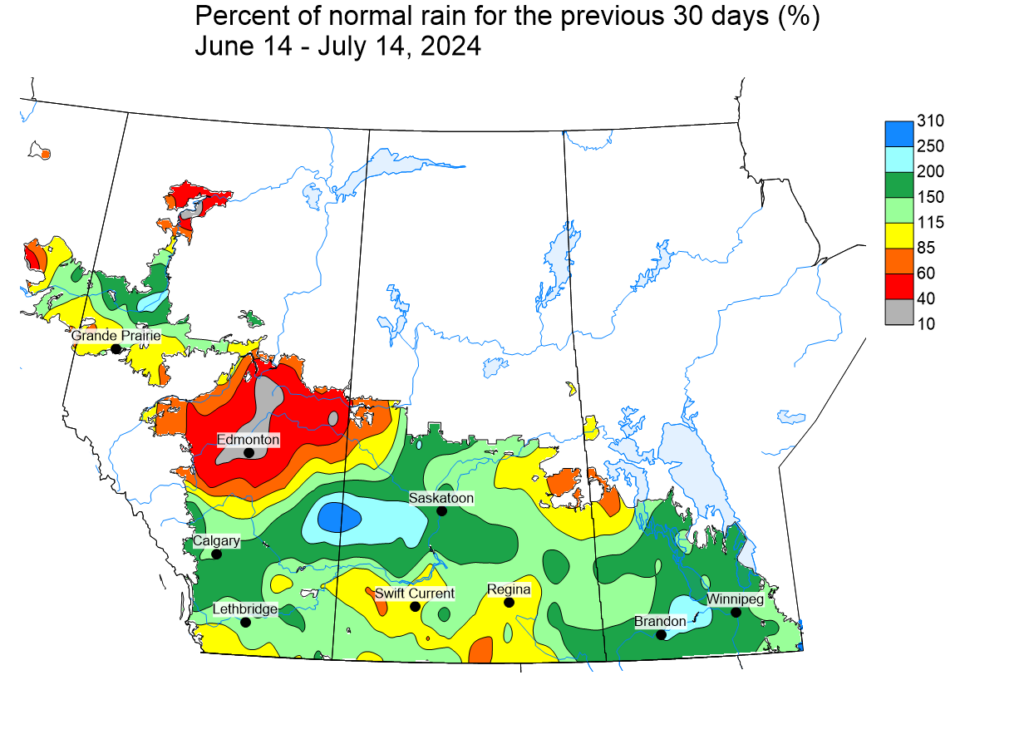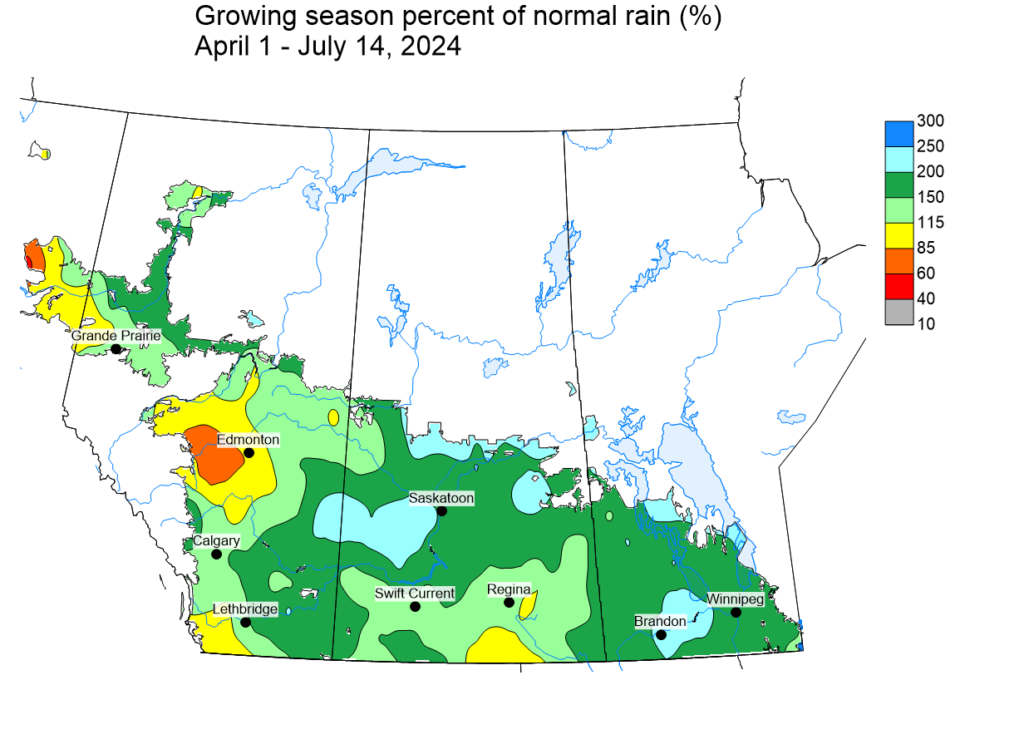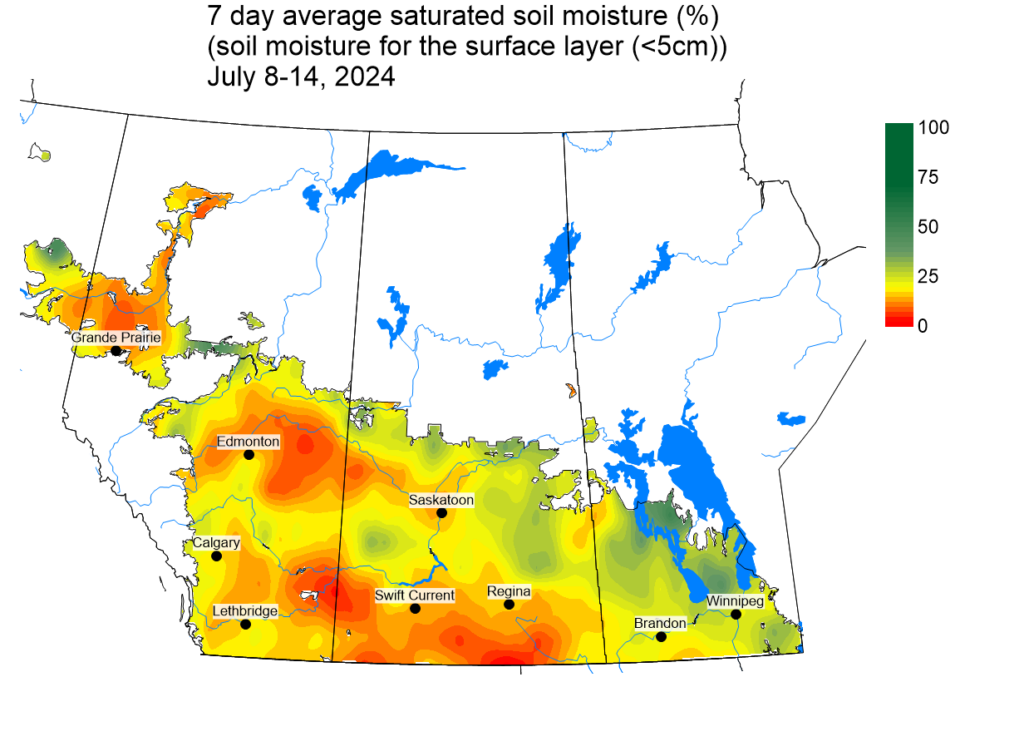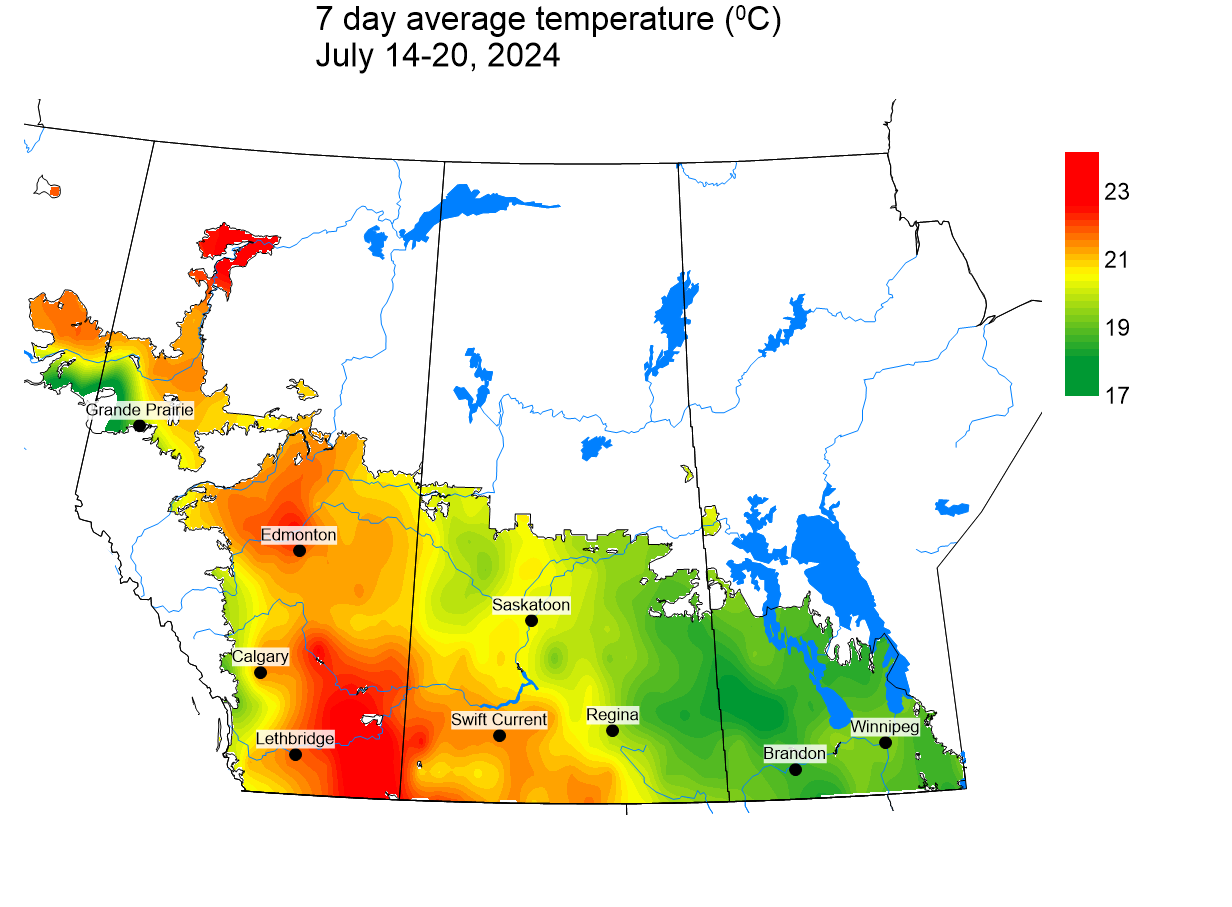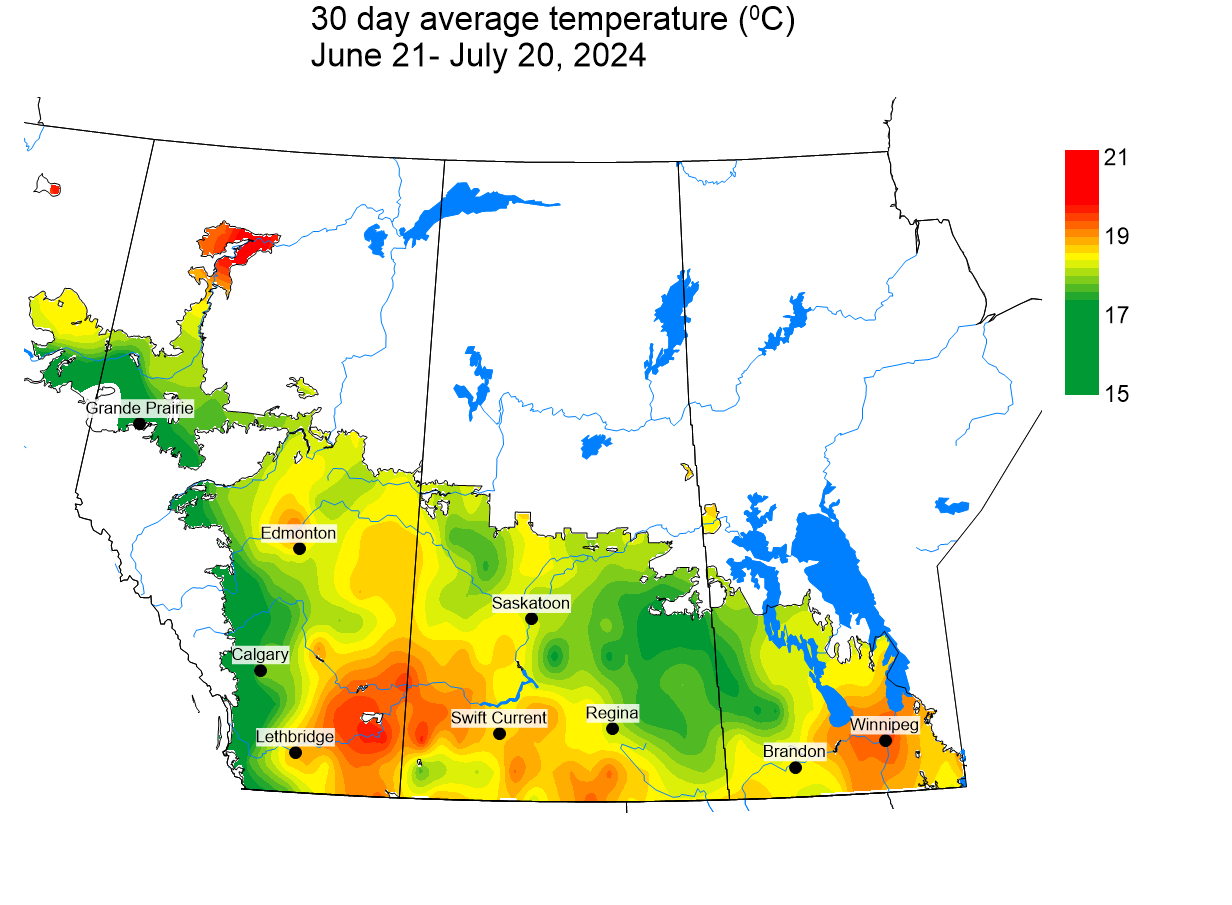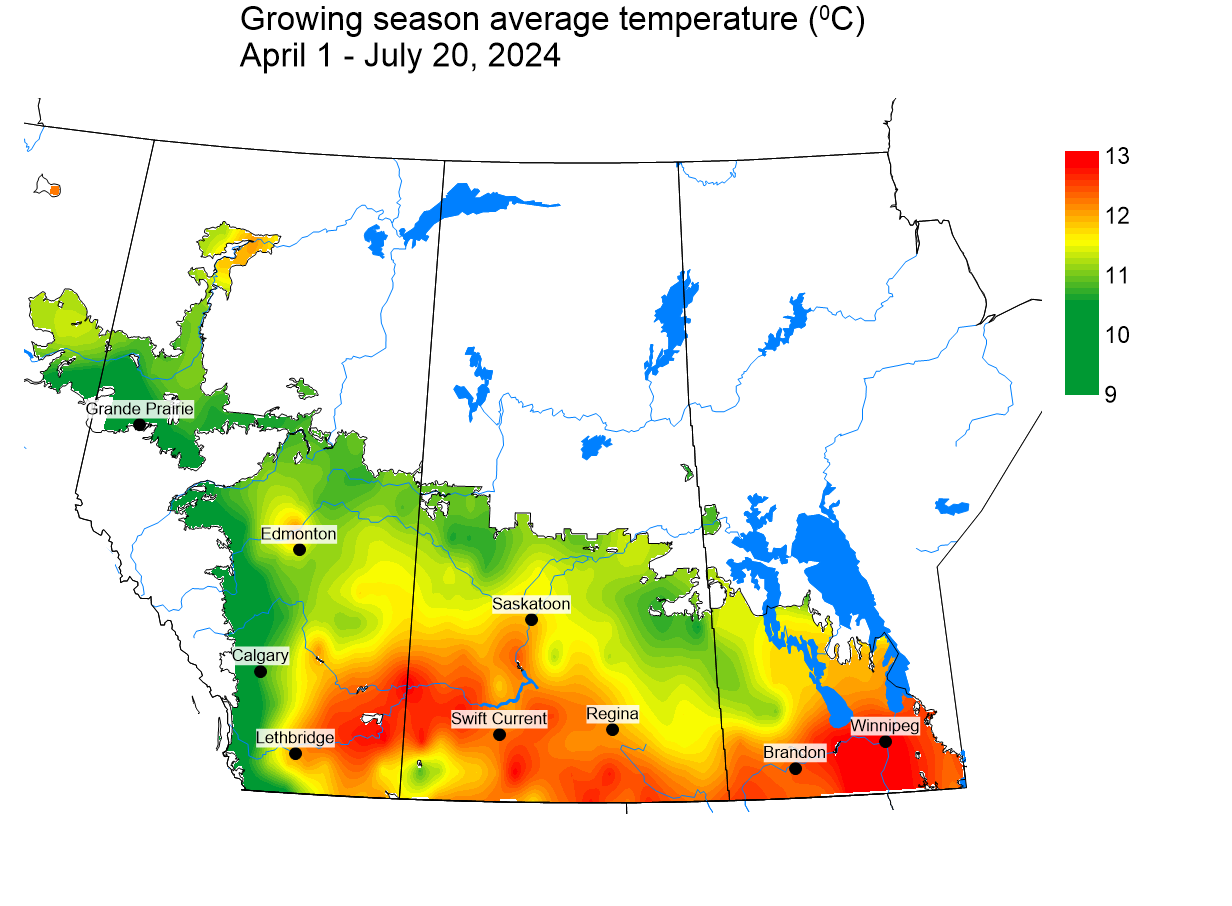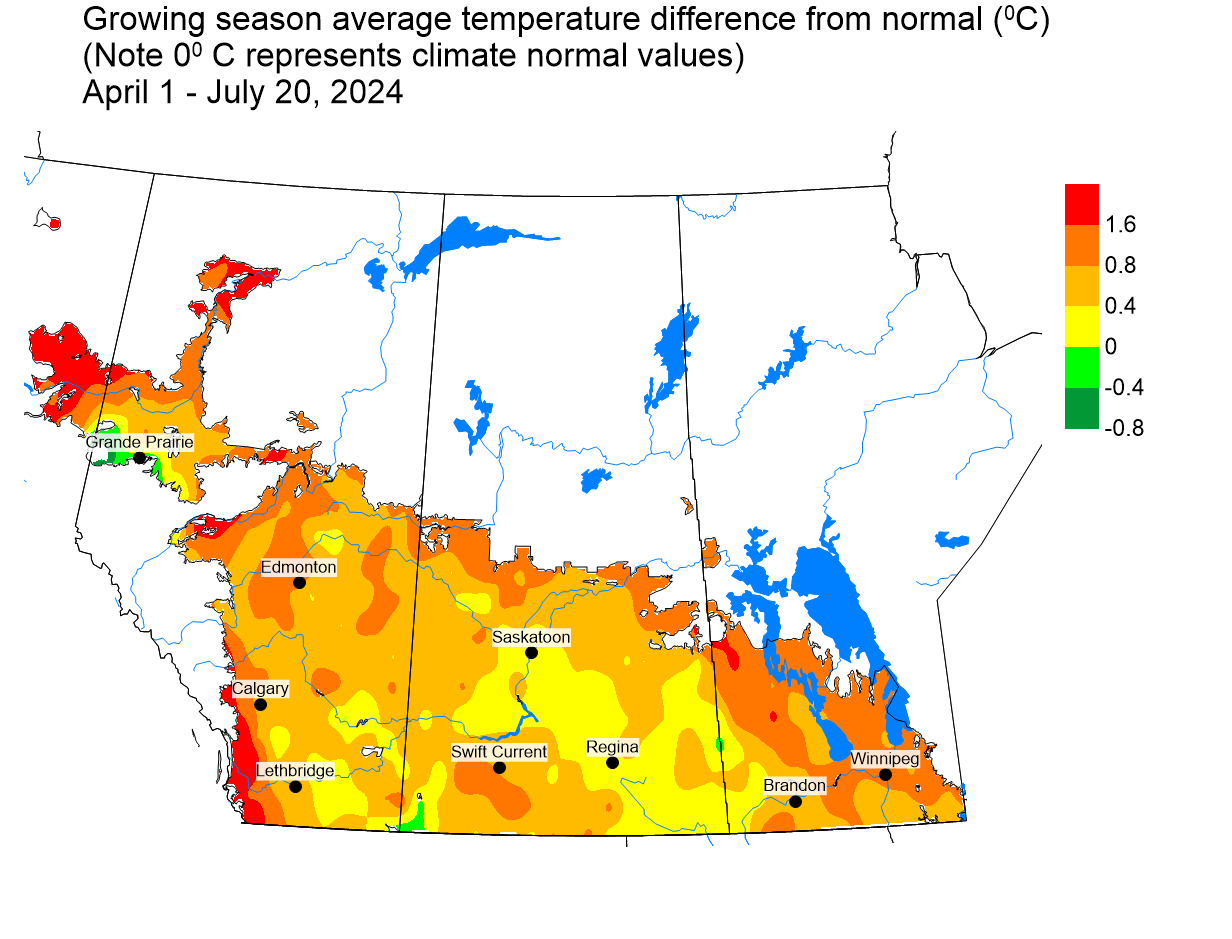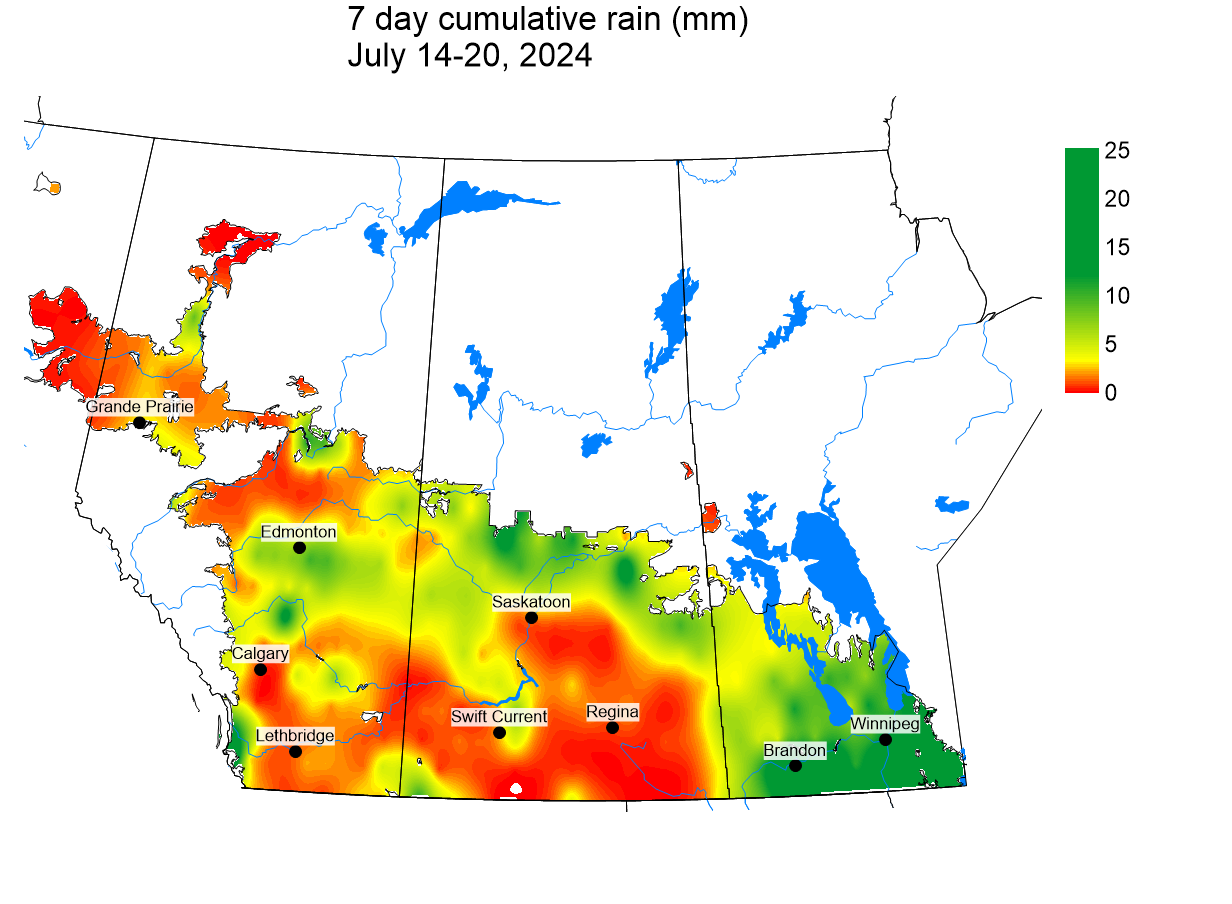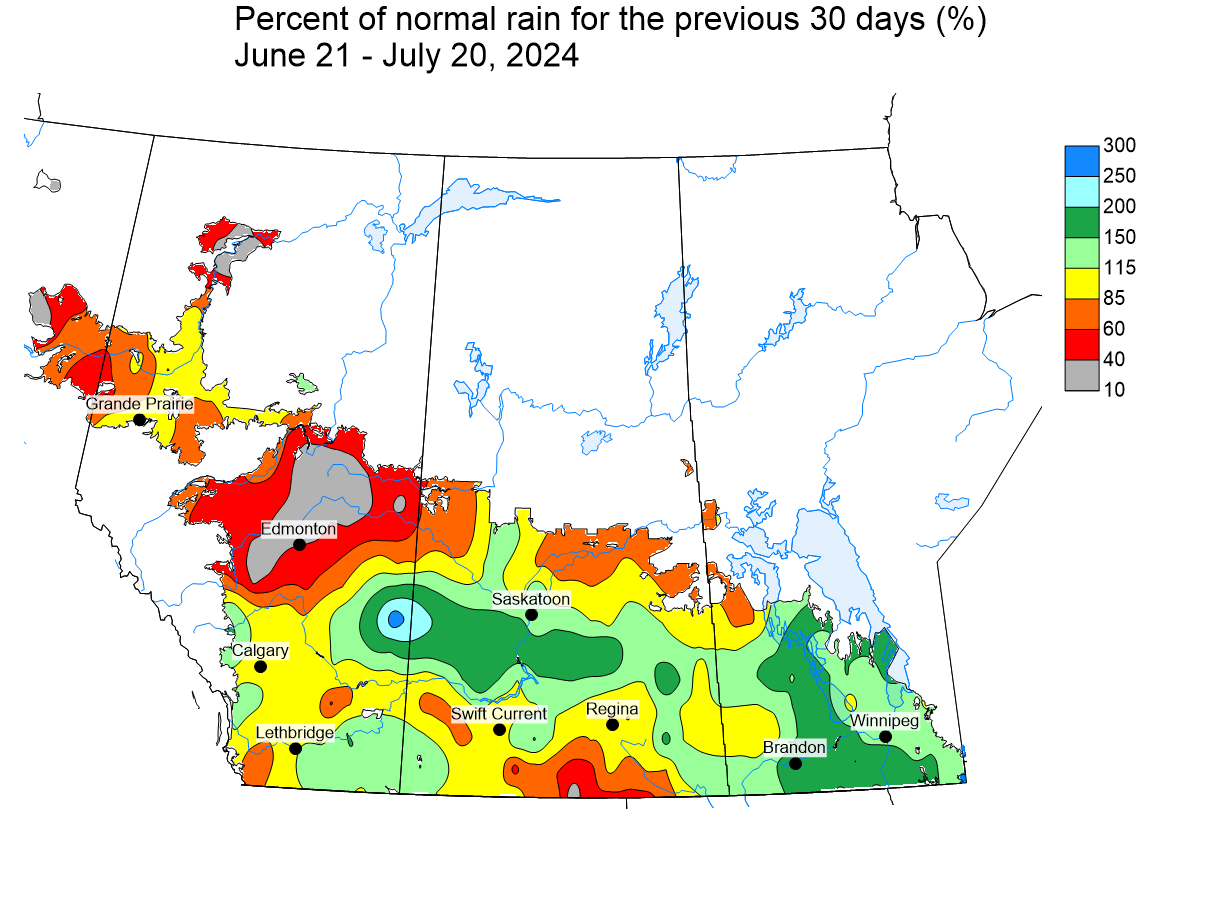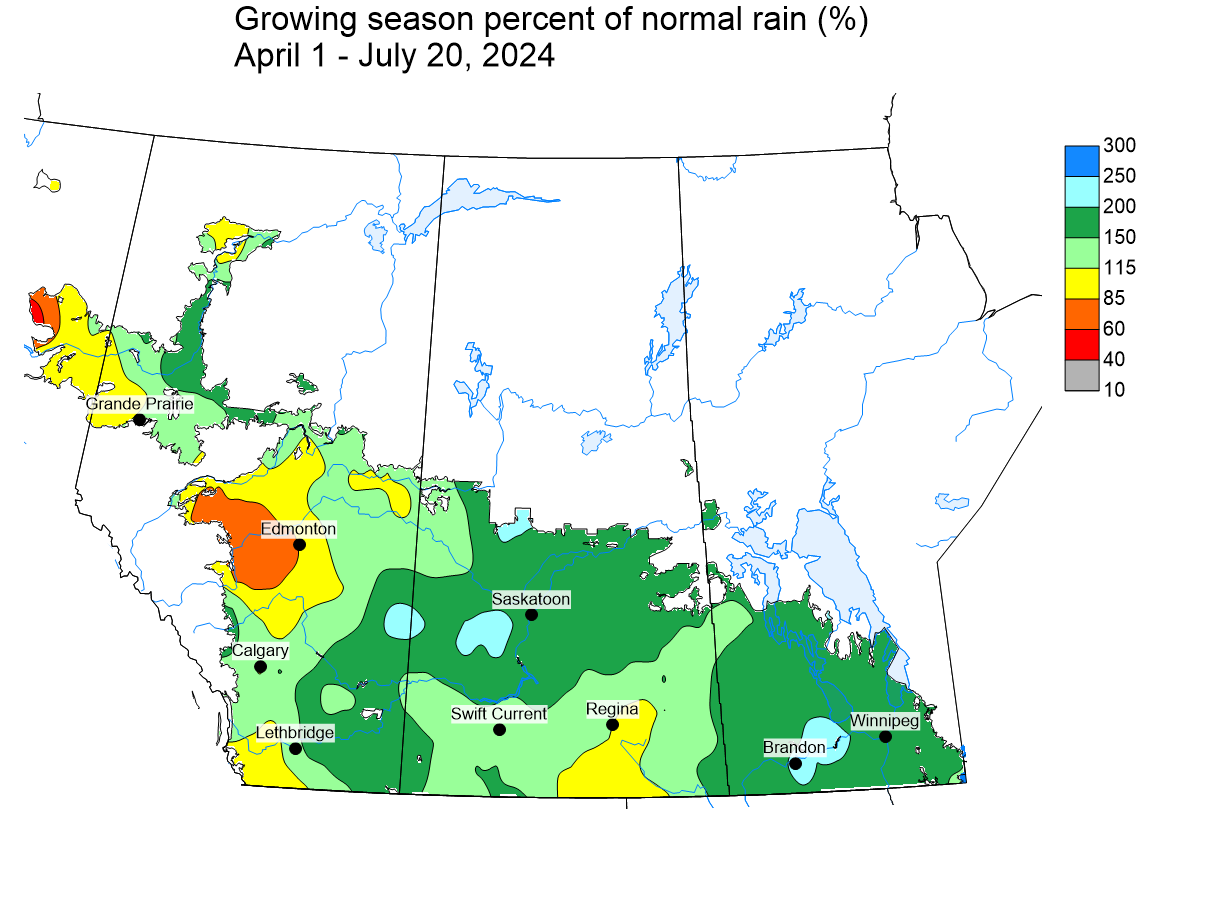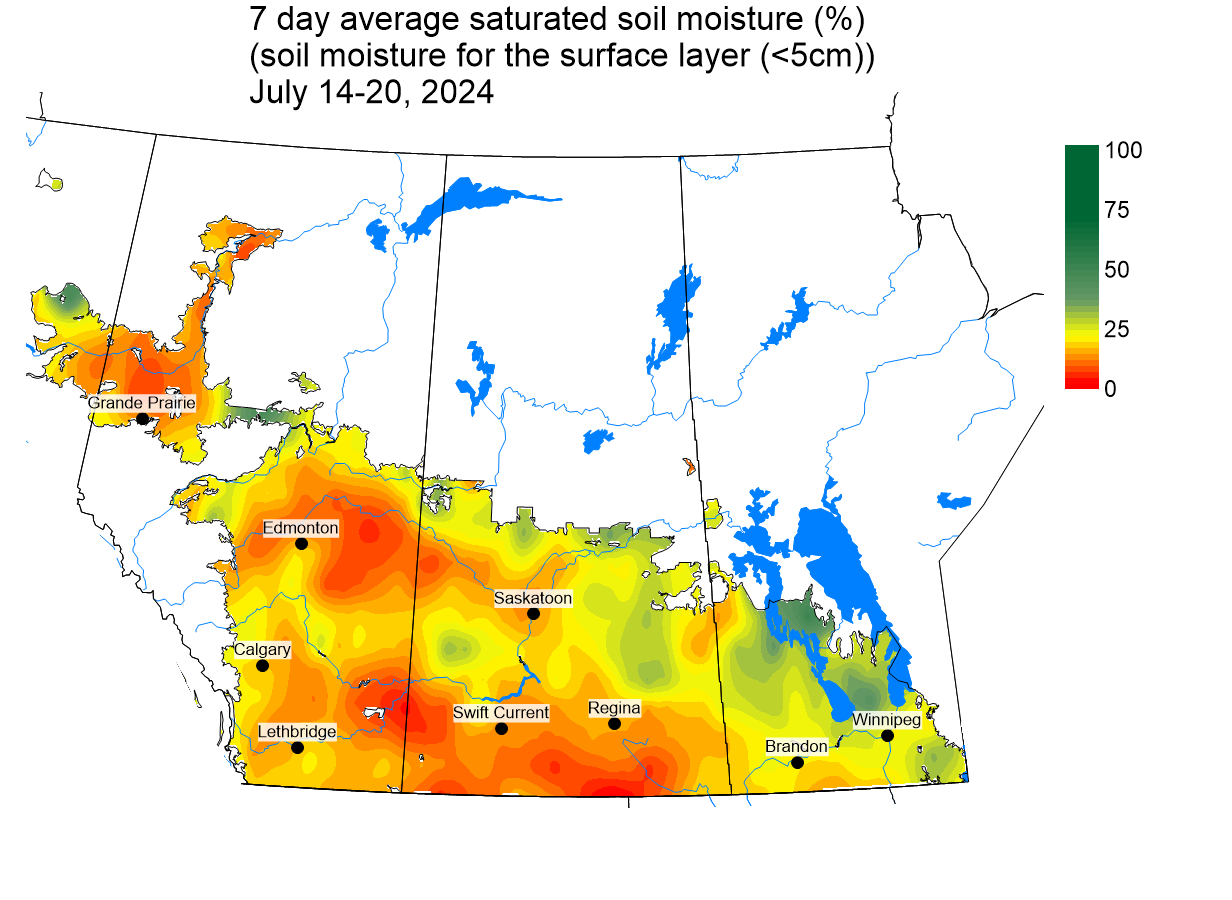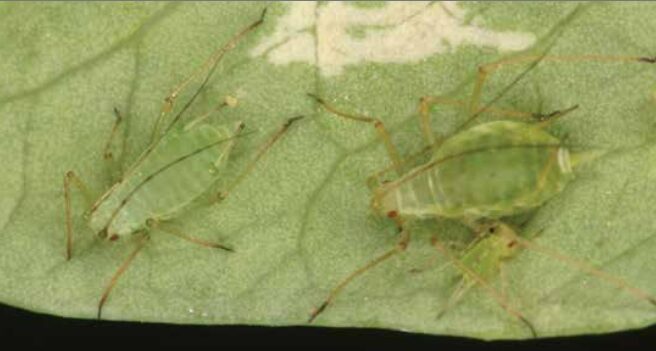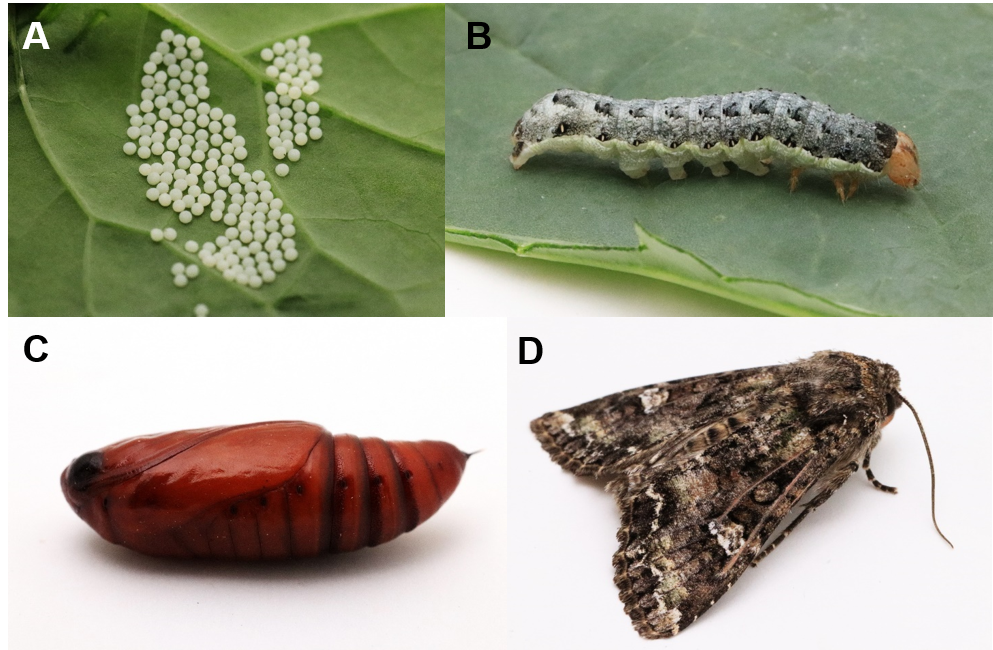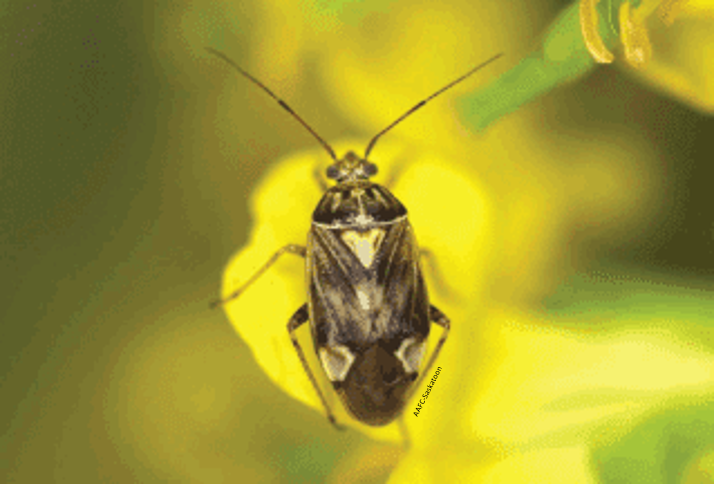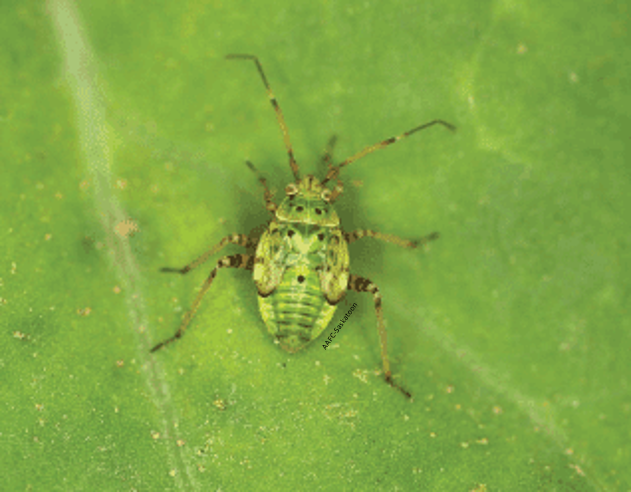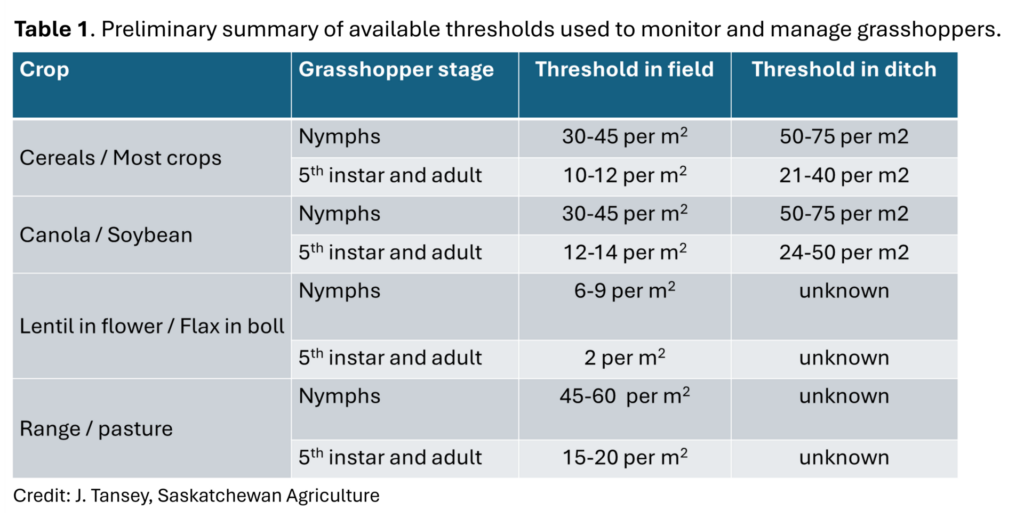Prairie-wide provincial entomologists provide insect pest updates throughout the growing season. Follow the hyperlinks to readily access their information as the growing season progresses:
MANITOBA’S Crop Pest Updates for 2024 are available. Access the online July 25, 2024 report (or PDF copy). Bookmark the insect pest homepage to access fact sheets and more! Highlights pulled from the latest report include:
• Aphids – Dr. J. Gavloski reported that, “Pea aphids in peas” remained a concern that resulted in “some control in the Southwest, Central and Interlake regions”. Additionally, “aphids in cereal crops are becoming more noticeable in some areas” but there also were “reports of aphid mummies (parasitized aphids), lacewings and lots of lady beetles in some fields of wheat.”
• True armyworm – “True armyworms were still noted in forage grasses in the Central and Interlake regions. There were no reports of control of true armyworms over the past week, and levels of larvae may be declining as they turn to pupae. Review the cumulative pheromone trap counts in the July 24, 2024 report. Also find reports of natural enemies of armyworm in this report.
• Grasshoppers– Reports that, “grasshoppers are more noticeable in crops in some areas, while in other areas grasshopper activity is mainly limited to field edges or is of less concern. There was a report of a number of dead grasshoppers clinging to the top of wheat heads (a sign of a fungal pathogen) in the Southwest region.”
• Canola flower midge – “Unopened buds, a result of canola flower midge, is noticeable in some canola fields in the Northwest region.”
• European corn borer – Review the report for tips to scout for egg masses in corn, hemp, quinoa, potatoes and other host crops. Access both the updated fact sheet and request to report by downloading and using the free Survey123 App.
• Corn rootworm – Review the report for tips to scout for both the northern and western corn rootworm.
• Bertha armyworm pheromone trap monitoring – Reports moths in “79 of 82 traps” although “counts have been low so far”. So far, the highest cumulative count reported is “290 from a trap near Killarney in the Southwest region”. Access the PDF copy of the July 25 report.
• Diamondback moth pheromone trap monitoring – Trapping is complete for 2024 (as of Wk 09; access the PDF copy of the July 4 report).
SASKATCHEWAN’S Crop Production News is back for the 2024 growing season! Access the online Issue #5 report which includes sections covering pea aphids and cereal leaf beetle. Bookmark their insect pest homepage to access important information! Also access the Crops Blog Posts that released a grasshopper activity update (June 2024), announced registration for the Crop Diagnostic School 2024 but also posts help for scouting fields for wireworms (May 2024), grasshopper identification: pest or not (Apr 2024), a summary of wheat midge populations and management (Mar 2024), and a description of pea leaf weevil populations (Feb 2024).
• A brief summary of notable insect pests relayed from Dr. J. Tansey is that insecticide control has been needed to protect lentils from pea aphids. And similarly with other aphids – this past week, an increased number of reports and calls were received related to cereal aphids.
ALBERTA’S Insect Pest Monitoring Network webpage links to insect survey maps, live feed maps, insect trap set-up videos, and more. There is also a Major Crops Insect webpage. Remember, AAI’s Agri-News occasionally includes insect-related information, e.g., assessing and a description of missing pods on canola (July 22, 2024), scout for wheat midge (July 15, 2024), the right canola crop stage to spray for lygus bugs (July 8, 2024), soil moisture, wheat midge and other insect pests (June 24, 2024), scout for grasshoppers and other insect pests (June 17, 2024); how to manage stem feeding from flea beetles, keep canola bins malathion-free, scout for grasshoppers and other pests (June 10, 2024); scout for insect pests (June 3, 2024); scout for grasshoppers (May 27, 2024); flea beetle control (May 6, 2024); cereal insect pests, latest on insects in canola, and post-emergence wireworm scouting (May 13, 2024).
• Wheat midge monitoring – Cumulative counts arising from weekly data are available so refer to the Live Map. So far, cumulative trap counts from 37 trap locations are reporting; 10 sites in central Alberta are “high” and in the Peace River region 22 sites are reporting “high”, 2 sites are “medium”, and 2 sites are “low” (as of July 25, 2024).
• Cabbage seedpod weevil monitoring – Sweep-net count data can be reported here then the data populates the Live Map. So far, a total of 16 sites in southern Alberta are reporting; there are 14 “low risk” plus 2 “high risk” reports as of July 18, 2024).
• Bertha armyworm pheromone trap monitoring – Cumulative counts arising from weekly data are available so refer to the Live Map. Cumulative trap counts from 266 trap locations are all reporting “low risk” across the province while 1 trap location near Fairview, plus 3 trap locations in southern Alberta (2 in Vulcan County plus 1 near Lethbridge) are reporting “medium risk” as of July 25, 2024).
• Diamondback moth pheromone trap monitoring – Cumulative counts arising from weekly data are available so refer to the Live Map. Cumulative trap counts have been recorded from 32 reporting sites and 28 remain in the “no risk” category as of July 4, 2024). Four trap locations have caught > 25 adult diamondback moths; sites fall within the County of Grande Prairie (as of June 8, 2024), County of Warner (as of June 15, 2024), Vulcan County (as of June 15, 2024), and County of Barrhead (as of June 15, 2024).
• Cutworm live monitoring map – Cumulative counts arising from weekly data are available so refer to the Live Map. 10 surveyed sites have reported from across the province, nine falling within southern Alberta and one report from the County of Grande Prairie.

